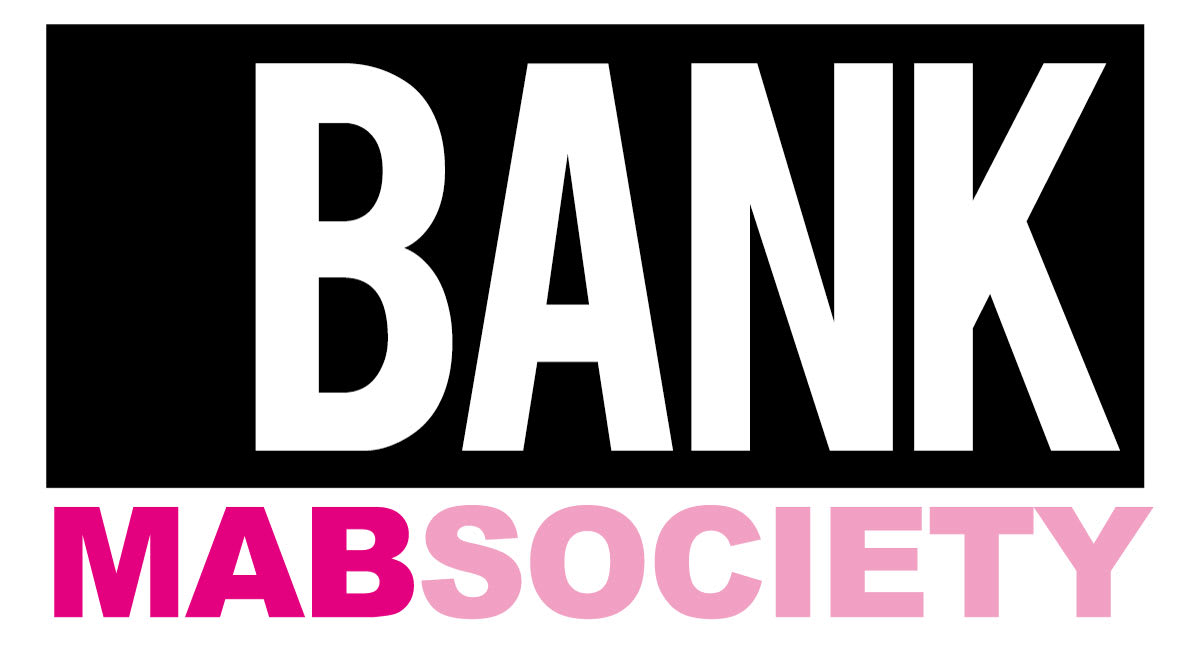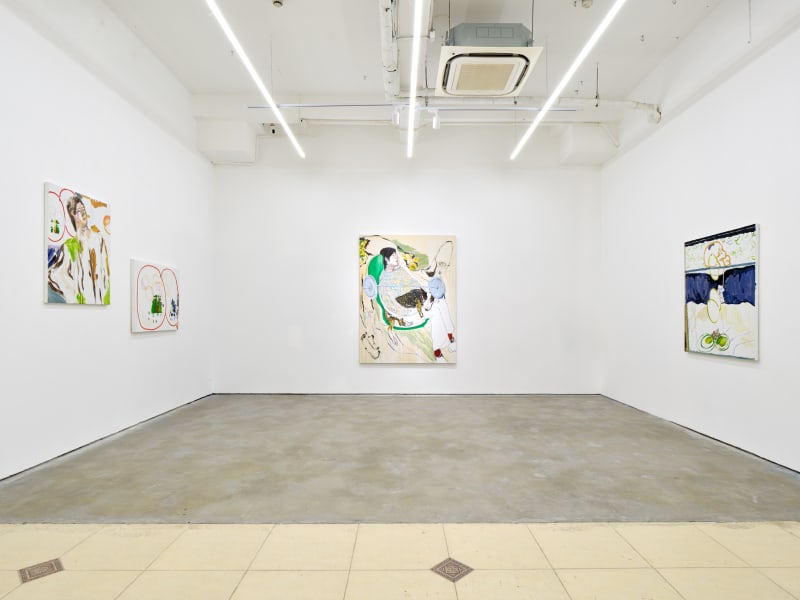Zheng Haozhong: Indoor Enclosure, Sub-Alto Saxophone, Drum Roll, Saw, Voice Silence Turns into A Major Musical Phrase
Past exhibition
Overview
BANK is pleased to announce that Zheng Haozhong's new solo exhibition will be held from September 28, 2023, to October 31, 2023. Titled "Indoor Enclosure, Sub-Alto Saxophone, Drum Roll, Saw, Voice Silence Turns into A Major Musical Phrase," the exhibition harmonizes music rhythms with brushstrokes, showcasing the diverse facets of painting that emerge from the artist's personal ritual in creative process.
Zheng Haozhong has won First Prize in the John Moores Painting Prize (China) in 2014. He has held solo exhibitions at BANK/MABSOCIETY in Shanghai (2016), the Centre for Chinese Contemporary Art in Manchester (2016) and KWM Art Center in Beijing (2018). His public collections include the White Rabbit Museum in Sydney, the DSL Foundation, and the Moegling Foundation in the United States.
—
A boldness that penetrates everything can be created with a filbert hog bristle brush, comparing to a flat-headed hog bristle brush, the filbert brush is more effortless in forming direct strokes. The dark hue of ivory black plays a crucial role in these groups of figure studies. Which aligns with Zheng Haozhong's fragmented emotions. By choosing to observe the momentary dark traits of the subjects, the artist quickly executes his strokes, the smooth surface of the mid-line finished canvas and its bright white background complies with this licentious prologue. In the subsequent steps, he slows down suddenly, pretends to squeeze paint, chitchats with the models, or strokes the Bull Terrier that has been kept in his studio. This pause foreshadows the next stage of the ritual. Rituals should be extremely formal, Colors serving the optical images are appearing, and to interpret the preparation process in history of oil paint on canvas. The artist straightens his neck, observes with a vacant gaze, until his chin tilts upward, his body slightly leans forward, everything is aligned for the sacred ceremony. Zheng Haozhong simply loves this ritual, because starting to paint with such a prologue convinces him this is worthwhile, and he will never regret it.
In his studio, I counted, there are probably four to five approaches to enter painting. In these aproaches, there is always a different prologue, a declaration with unrepeatable temperaments and tones, dialogues composed of various gestures, and a sense of form that has been alienated and intercepted. Zheng Haozhong begins his performance in this studio. He paints his friends in B flat minor, figures switching to major keys are usually people he is not quite familiar with, bright and hospitable, putting up friendly facades. But it's different with the closer friends, the surrounding sick friends who hang around in his studio, they allow him to add more peripheral (outside) tones that are not in tonal relations.
Loneliness is inevitable. If he continues to paint in the same studio for years, probably any studio will look like a prison to him, and the windows are like punctuations in this cell. To erase the uncertainty caused by excessive deconstruction, Zheng Haozhong uses horizontal and vertical window frames to save the rhythm in painting which he despises. Yellow and violet are twisted together. Dirty and vulgar! But using ocher and coal black to whip these twisted plants, he will end up happily afterward. But on the next morning, he completely forgets the hatred of the previous day, switching his role, faces the shimmering colors in Bonnard's eyes with joy. Even the window frames, whom originally plays the destroyers, have also undergone slight changes in color and thickness. And in those meticulously arranged still life paintings, the dark expressive lines become restrained. He uses small goat-hair brushes to dip poppy oil and paints in a sitting position to venerate the oval palette. Those improvised musical phrases meander from the outside into the inside. Well, let's start the variation with shriveled fruits! At this moment, the painter firmly believes that improvisation is not the end of painting, it repairs the broken tonal relations after countless ruptures. Although he no longer speaks of the afterlife of this medium, he still believes that painting is worthwhile.
In this solo exhibition, Zheng Haozhong will enrich and clarify his fundamental interpretation within his studio through the paintings and opening performance. Also I will continue to accompany him, communicate through the form of texts, gradually presents his creative thoughts and discussing its presence and absence.
Zheng Haozhong has won First Prize in the John Moores Painting Prize (China) in 2014. He has held solo exhibitions at BANK/MABSOCIETY in Shanghai (2016), the Centre for Chinese Contemporary Art in Manchester (2016) and KWM Art Center in Beijing (2018). His public collections include the White Rabbit Museum in Sydney, the DSL Foundation, and the Moegling Foundation in the United States.
—
A boldness that penetrates everything can be created with a filbert hog bristle brush, comparing to a flat-headed hog bristle brush, the filbert brush is more effortless in forming direct strokes. The dark hue of ivory black plays a crucial role in these groups of figure studies. Which aligns with Zheng Haozhong's fragmented emotions. By choosing to observe the momentary dark traits of the subjects, the artist quickly executes his strokes, the smooth surface of the mid-line finished canvas and its bright white background complies with this licentious prologue. In the subsequent steps, he slows down suddenly, pretends to squeeze paint, chitchats with the models, or strokes the Bull Terrier that has been kept in his studio. This pause foreshadows the next stage of the ritual. Rituals should be extremely formal, Colors serving the optical images are appearing, and to interpret the preparation process in history of oil paint on canvas. The artist straightens his neck, observes with a vacant gaze, until his chin tilts upward, his body slightly leans forward, everything is aligned for the sacred ceremony. Zheng Haozhong simply loves this ritual, because starting to paint with such a prologue convinces him this is worthwhile, and he will never regret it.
In his studio, I counted, there are probably four to five approaches to enter painting. In these aproaches, there is always a different prologue, a declaration with unrepeatable temperaments and tones, dialogues composed of various gestures, and a sense of form that has been alienated and intercepted. Zheng Haozhong begins his performance in this studio. He paints his friends in B flat minor, figures switching to major keys are usually people he is not quite familiar with, bright and hospitable, putting up friendly facades. But it's different with the closer friends, the surrounding sick friends who hang around in his studio, they allow him to add more peripheral (outside) tones that are not in tonal relations.
Loneliness is inevitable. If he continues to paint in the same studio for years, probably any studio will look like a prison to him, and the windows are like punctuations in this cell. To erase the uncertainty caused by excessive deconstruction, Zheng Haozhong uses horizontal and vertical window frames to save the rhythm in painting which he despises. Yellow and violet are twisted together. Dirty and vulgar! But using ocher and coal black to whip these twisted plants, he will end up happily afterward. But on the next morning, he completely forgets the hatred of the previous day, switching his role, faces the shimmering colors in Bonnard's eyes with joy. Even the window frames, whom originally plays the destroyers, have also undergone slight changes in color and thickness. And in those meticulously arranged still life paintings, the dark expressive lines become restrained. He uses small goat-hair brushes to dip poppy oil and paints in a sitting position to venerate the oval palette. Those improvised musical phrases meander from the outside into the inside. Well, let's start the variation with shriveled fruits! At this moment, the painter firmly believes that improvisation is not the end of painting, it repairs the broken tonal relations after countless ruptures. Although he no longer speaks of the afterlife of this medium, he still believes that painting is worthwhile.
In this solo exhibition, Zheng Haozhong will enrich and clarify his fundamental interpretation within his studio through the paintings and opening performance. Also I will continue to accompany him, communicate through the form of texts, gradually presents his creative thoughts and discussing its presence and absence.
Installation Views
Works











